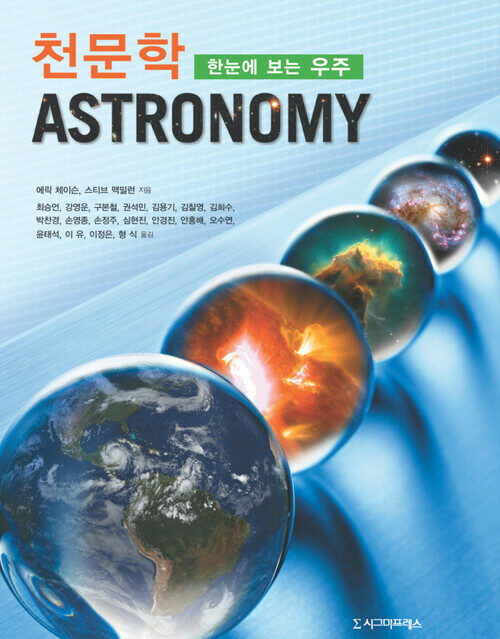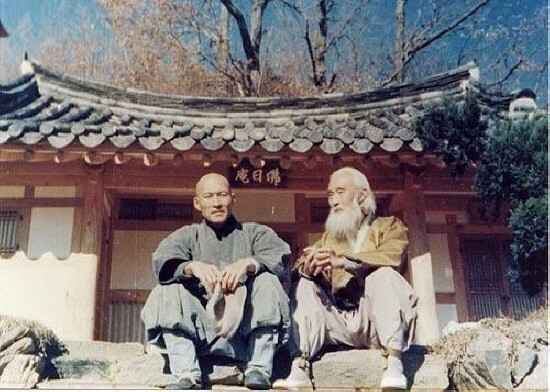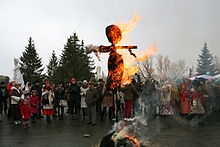Eric Chaisson
hideThis article has multiple issues. Please help to improve it or discuss these issues on the talk page. (Learn how and when to remove these template messages)
|
Eric J. Chaisson (pronounced chase-on, born on October 26, 1946 in Lowell, Massachusetts) is an American astrophysicist known for his research, teaching, and writing on the interdisciplinary science of cosmic evolution. He is also noted for his telescopic observations of interstellar clouds and emission nebulae of the Milky Way Galaxy, his empirical attempt to unify complexity science utilizing the technical concept of energy rate density, and his global leadership in improving science education nationally and internationally. He conducts research at the Harvard-Smithsonian Center for Astrophysics and teaches natural science at Harvard University.
He is an elected Fellow of the American Association for the Advancement of Science and of other scientific societies.
Biography[edit]
Chaisson graduated in physics from University of Massachusetts Lowell in 1968 and earned his PhD at Harvard in 1972. He has held professorial appointments at the Harvard-Smithsonian Center for Astrophysics, Johns Hopkins University, Space Telescope Science Institute, and Tufts University, where he was for 20 years director of the Wright Center for Science Education while holding research professorships in the department of physics and in the school of education. He is now back at the Harvard College Observatory and also serves with the Faculty of Arts and Sciences at Harvard, where he teaches an annual undergraduate course on the subject of cosmic evolution that synthesizes the essence of astrophysics and biochemistry.
Chaisson has published nearly 200 papers in professional journals and written a dozen books, several of which have won awards, such as the B.J. Bok Prize[1] (Harvard) for astronomical discoveries, the Smith-Weld Prize (Harvard) for literary merit, and the Kistler Award for increasing understanding of subjects shaping the future of humanity. He has also won scholarly prizes from Phi Beta Kappa and the American Institute of Physics, a Certificate of Merit from NASA for work on the Hubble Space Telescope, as well as fellowships from the Sloan Foundation and the National Academy of Sciences.[citation needed]
Chaisson's major research interests are twofold: His scientific research addresses an interdisciplinary, thermodynamic study of physical, biological, and cultural phenomena, seeking to understand the origin and evolution of galaxies, stars, planets, life, and society, thus devising a unifying cosmic-evolutionary worldview of the Universe and our sense of place within it writ large.[2][3][4][5][6] His educational work engages master teachers and computer animators to create better methods, technological aids, and novel curricula to enthuse teachers, instruct students, and enhance scientific literacy from grade school to grad school.[7][8][9][10]
See also[edit]
References[edit]
- ^ "Bok Prize". Department of Astronomy. Harvard University. Retrieved 2016-03-06.
- ^ "A Unifying Concept for Astrobiology," International Journal of Astrobiology, v 2, p 91, 2003.
- ^ "Complexity: An Energetics Agenda," Complexity, v 9, p 14, 2004; DOI: 10.1002/cplx.20009.
- ^ "Long-Term Global Heating from Energy Usage," Eos Transactions, American Geophysical Union, v 89, p 253, 2008; DOI: 10.1029/2008EO280001.
- ^ "Exobiology and Complexity," published in 11-volume, Encyclopedia of Complexity and Systems Science, R, Myers (ed.), p 3268, Springer, Berlin, 2009.
- ^ "Energy Rate Density. II. Probing Further a New Complexity Metric," Complexity, v 17, p 44, 2011.
- ^ "Rhythm of the Cosmos: Finding Unity among the Natural Sciences", Tufts Magazine, p 16, Spring, 2001.
- ^ Cosmic Evolution: Rise of Complexity in Nature, Harvard Univ. Press, 2001. ISBN 0-674-00987-8
- ^ Epic of Evolution: Seven Ages of the Cosmos, Columbia Univ. Press, 2006. ISBN 0-231-13561-0
- ^ Astronomy Today (co-authored with S. McMillan), Pearson, 9 editions, 1993-2018.
External links[edit]
- Eric Chaisson's curriculum vitae
- Eric Chaisson's web site
- Cosmic evolution web site (containing text, images, animations, movies, and hyperlinked references of interest to both non-scientists {Introductory Track} and professional scientists {Advanced Track}).
- A 60-minute video interview with PBS-Science for the Public 2014: WGBH Forum
- Representative samples of recent research articles: Current Research
- Syllabus of annual course at Harvard: Current Teaching
Cosmic Evolution (book)
Cosmic Evolution: The Rise of Complexity in Nature (2001) is a book by Harvard astrophysicist Eric Chaisson.[1] It examines cosmic evolution which includes the history of natural evolution from the Big Bang to the present from the perspective of the emerging multi-scientific discipline of Big History.[2] It offers an explanation of why simple structures billions of years ago gave way to more complex structures, such as stars, planets, life, and human beings in complex civilizations.[2] It is written for a general audience interested in science.
Overview[edit]
Chaisson argues that cosmic history can be examined from the perspective of energy flows.[1][3] He analyzes the flows of energy through various objects and argues that these flows are relevant to understanding the relative complexity of these objects.[1] He suggests that a key measure for scientific analysis should be energy per second per gram, termed "energy rate density," and that analysis using this yardstick can be used to explain not only human evolution but cosmic evolution.[3] He sees energy as "work per unit time" which he equates with power, and shows how energy rate density in some structures has increased over time.[3] For example, in Chaisson's view, the human brain uses a much greater amount of energy, relative to its size, than a galaxy.[4] He suggests that energy lets us make "order out of disorder"; for example, an air conditioner, which draws current from an electric outlet, can turn a less-complex zone of lukewarm air into two more-complex zones of hot air and cold air, and in so doing, it reverses the disorder in a room.[1] According to his view, organisms do much the same thing with energy but in a more complex way, by taking in food instead of electrons, to keep themselves from disintegrating and becoming less complex; he analyzes energy flows in not just organisms and society but in inanimate structures such as stars, galaxies, planets.[1]
Chaisson notes that increases in complexity are consistent with the second law of thermodynamics; according to one reviewer, the second law might suggest that complexity should decrease with the universe "slouching toward disorder."[1][5] However, Chaisson argues that complexity can increase because complex structures such as a star can "generate and sustain complexity by exporting enough disorder to its surrounding environment to more than makeup for its internal gains."[5] From this perspective, Chaisson offers a definition of life as an "open, coherent, space-time structure maintained far from thermodynamic equilibrium by a flow of energy through it."[1]
Reactions to Chaisson's book are generally positive, although different reviewers took issue with some of his points and writing style. Biologist Daniel W. McShea originally noted that Chaisson is "prone to using inflated language," but a decade later in another review of his work notes that "Chaisson offers data showing a trend in what he calls energy rate density ... over the history of life (and even over the much longer history of the universe), that's really saying something."[5] Critic Stewart Kauffman found the book to be a "wonderful discussion."[3] Critic Hillel Braude wrote "Cosmic Evolution draws from a rich scientific palette to paint a colorful explanatory model of the ascending complexity in nature."[4] Critic Charles Seife wrote highly about Chaisson's book although he criticized Chaisson's definition of life as being "such a broad definition" that it becomes meaningless while acknowledging that Chaisson's analysis "gives the theory some numerical muscle."[1] Many more excerpts from reviews of this book are collected here [6]
Choice of units[edit]
Chaisson chose to use the obsolete cgs (centimeter, gram, second) system of measurement, rather than SI units as is standard current practice, for his calculations and numerical estimates - thus quoting energy in ergs (one ten-millionth of a Joule), also using calories, and sometimes kilocalories as alternative measures of energy.
References[edit]
- ^ a b c d e f g h Charles Seife (book reviewer), Spring 2001, Wilson Quarterly, COSMIC EVOLUTION: The Rise of Complexity in Nature, Retrieved Sept. 1, 2014, By Eric Chaisson. Harvard Univ. Press. 274 pp. , "...Harvard University astrophysicist Chaisson ... Energy lets us make order out of disorder. ... defines life ... open, coherent, space-time structure maintained far from thermodynamic equilibrium by a flow of energy through it....problem with such a broad definition of life is that it becomes meaningless...
- ^ a b Book Review by George Ellis, Nature 412, 587-588 (9 August 2001), doi:10.1038/35088114, Review title: An energetic view of nature, An energetic view of nature, Retrieved Sept. 1, 2014, "...stepping back to confront the broader scheme of things..."
- ^ a b c d Stewart Kauffman, June 30, 2010, NPR, Why Is The Universe Complex? Broken Symmetries, Information, Energy, Work, Retrieved Sept. 1, 2014, "...Eric Chaisson’s Cosmic Evolution is a wonderful discussion ... well supported ... energy density per gram universe per second has increased over the course of cosmic, biological and cultural evolution...
- ^ a b Hillel Braude, Perspectives in Biology and Medicine, Volume 45, Number 2, Spring 2002, pp. 307-309, 10.1353/pbm.2002.0021, Cosmic Evolution: The Rise of Complexity in Nature (review), Retrieved Sept. 1, 2014, review of The Rise of Complexity in Nature. By Eric J. Chaisson. Cambridge: Harvard Univ. Press, 2001. Pp. xii + 274...."Cosmic Evolution draws from a rich scientific palette to paint a colorful explanatory model of the ascending complexity in nature ... analysis of energy flows therefore provides the opportunity to map the evolution in complexity of the cosmos...."
- ^ a b c Daniel W. McShea (book reviewer), November-December 2001, Volume 89, Number 6, Page: 1, American Scientist, Measuring Complexity, Retrieved Sept. 1, 2014, "...a complex structure such as a galaxy, a star or an organism is an open system, able to generate and sustain complexity by exporting enough disorder to its surrounding environment to more than make up for its internal gains..."; Complexity and the Arrow of Time Lineweaver et al. (eds.) Cambridge Univ. Press, 2013 (review), Science, vol. 342, pg 1319, 2013, "Only two other trends on the scale of life’s history have been documented quantitatively—those in body size and in hierarchy or nestedness (prokaryotic cell, multicellular individual, colony). Energy rate density is a fine candidate for a third."
- ^ [1].
External links[edit]
- Arrow of time graphic
- Cosmic evolution web site (containing text, images, animations, movies, and hyperlinked references of interest to both non-scientists {Introductory Track} and professional scientists {Advanced Track}).
















